FREE DRAIN CLEANING ADVICE from Descent Drains
Below are some of the most common questions we receive and their answers. For more information or help with your specific drain problem, get in touch with us via our Contact page, or call us on 0800 779 72 92 / 07908 26 72 92

What is a drain?
A drain is a pipe that carries either foul water (sink / bath / toilet etc.) or surface water (rain) from one house only. The owner or occupier of the house is solely responsible for maintaining a drain, clearing blockages and repairing any faults that occur up to the property boundary. Outside of the property boundary the drain becomes the responsibility of the sewerage undertaker.

What is a sewer?
A sewer is a pipe that carries either foul water or surface water from more than one house. A sewer may be either Public or Private.
Public Sewers are the responsibility of Water Services. These are generally the main sewer in the road but also include sewers serving more than one property.
A Private Sewer is the responsibility of the owners or occupiers of the houses it serves. This means that the owners or occupiers of all houses upstream of a blockage or defect are all responsible for clearance of blockages or repair. Generally only blocks of flats or developments on a private site will have private sewers serving them.
If you live in rented accommodation you should contact your landlord to clarify your responsibilities regarding sewers serving the property you are renting.

Rural Drainage Systems
These are private drainage systems such as septic tanks and cesspools. Although generally these units are reliable and need little attention, in some cases problems can occur, including:
Unpleasant Smells
System blockages
Flooding and fouling of land and nearby ditches
The responsibility for these types of rural drainage systems falls entirely on the householders. If such a system serves more than one property then each householder is responsible for his or her own drains until the point where it connects into a common part of the system. Any works or maintenance that is required to these common parts to repair some of the defects listed above is the joint responsibility of all householders served by the system.
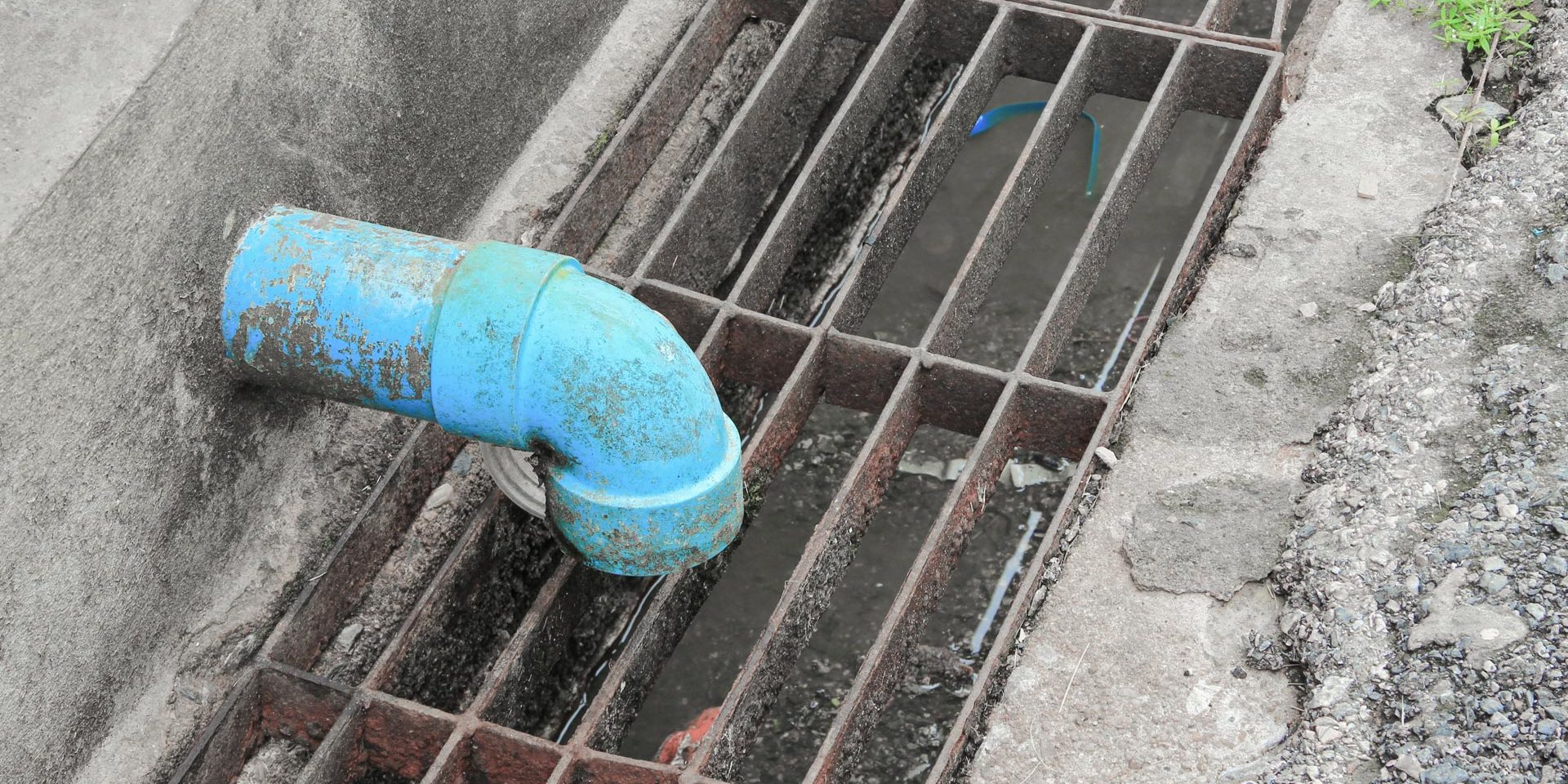
Blocked drains
Blocked drains are inconvenient and can be a potential health hazard. Drain blockages are preventable.
Common Causes:
Pouring cooking fat, oils and grease down drains - These can solidify into the waste system and are difficult to remove.
Detergent scaling, particularly in hard water areas.
Flushing paper and cloth products, such as disposable nappies, baby wipes, femine hygine products, cotton wool balls/buds and newspaper, down toilets - They can form a solid mass and eventually stop the flow of water.
Pouring cement and plaster down drains - These can set rock-hard in the drain.
Pouring waste oil from motor vehicles into drains - It is illegal to do this.
Collapsed or damaged drains.
How can I get drains unblocked:
This can be done by yourself, but its not the nicest job to complete, you can also use drain rods, however you can cause a lot of damage if used incorrectly.
Drain rods will unblock a drain but will not remove solidified deposits or scaling of detergents, these will require high pressure water jetting.
It is best to call a professional drainage company - DESCENT DRAINS, to get the drainage system cleaned and checked thoroughly to make sure that there is not a serious drainage problem present.
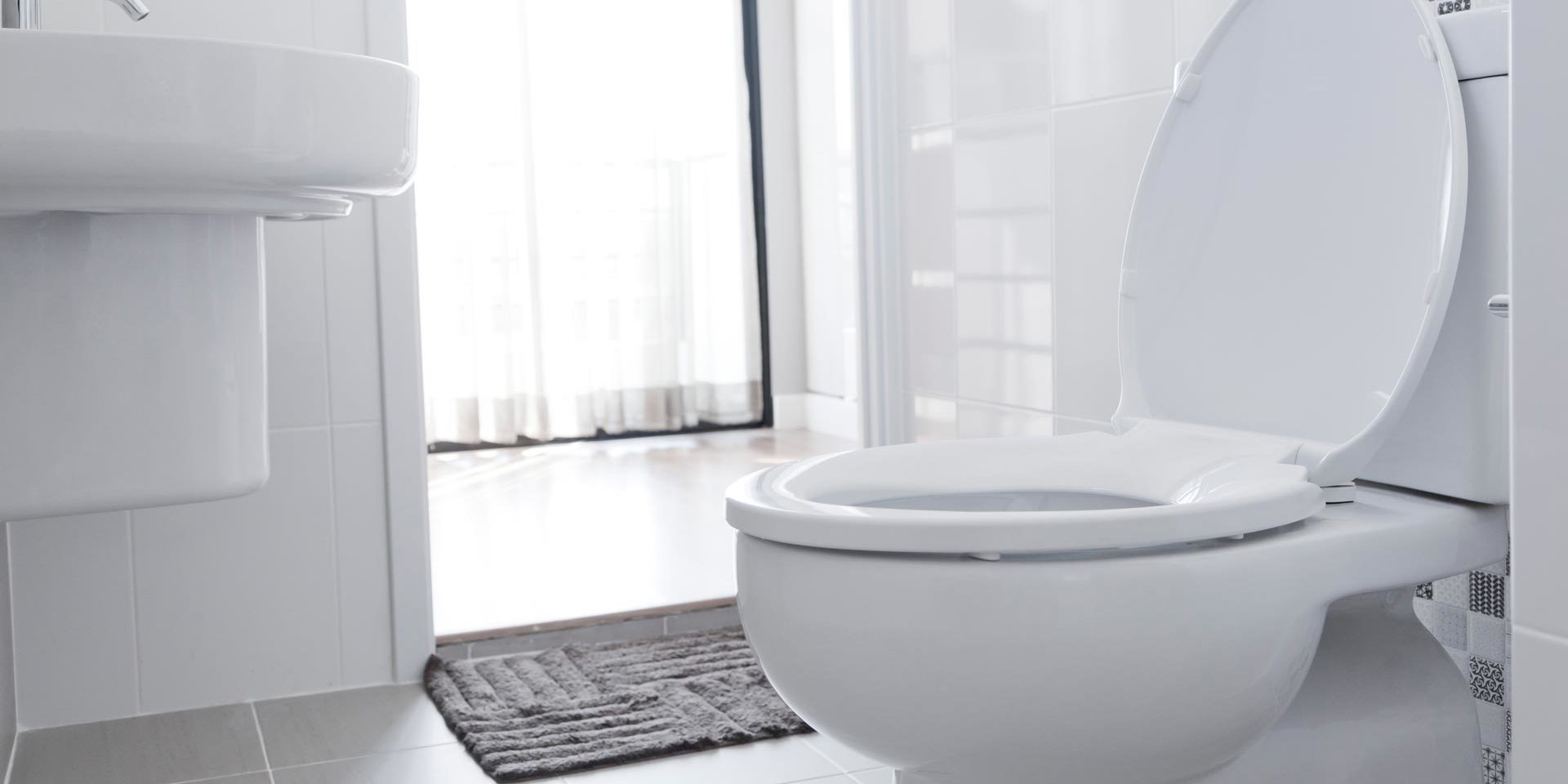
Blocked toilets
Toilets can be unblocked with the use of a plunger - a common device that is used to release stoppages in plumbing. The tool consists of a rubber cup with an attached stick "shaft", usually made of wood or plastic. The cup is pushed down against the drain opening, and either pressed hard into the drain to force air in, or is pushed down until the rubber cup is flattened, then pulled out (repeating the process several times very rapidly), causing a vacuum that attracts material. The intent is to loosen or break up a clog caused by excessive material in the drain.
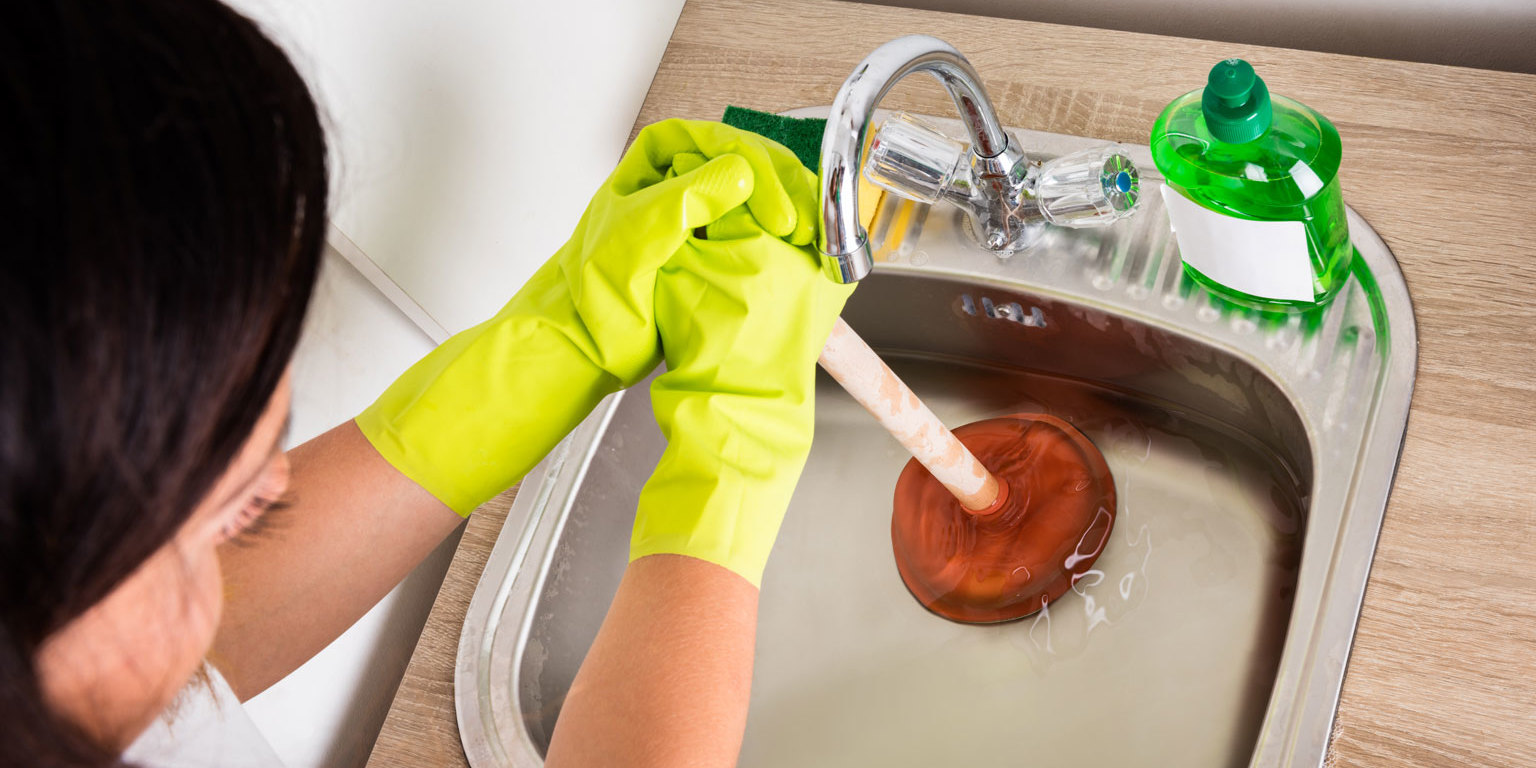
Blocked sinks & baths
The 40mm waste pipe that takes water away from a sink or bath can be unblocked with a plunger, but if this will not clear the drain a plumbers snake can be used.
A plumber's snake, sometimes known as a "roto-rooter", "toilet jack" or "electric eel" is a flexible auger used to remove clogs in plumbing that cannot be loosened with a plunger.
Most devices consist of a coiled metal wire with space between the coils at the end. The other end is attached to a device with a crank that rotates the wire as it moves down into the pipe. Drains are cleared by one of several mechanisms:
The auger end of the wire digs itself into the clog much like a corkscrew, allowing retrieval of the object causing the clog when the snake is pulled out. (Commonly hair, combs, small toys, cloth, etc)
The end of the snake breaks up the object, allowing it to pass through the drain.
The snake flails around the inside surface of the pipe, scraping off accumulated matter (ranging from mineral deposits to congealed fats, oils and greases) which was reducing the effective interior diameter of the drain pipe or blocking it.
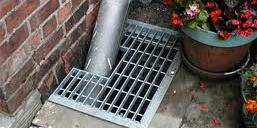
Gulleys and drains
Gulleys should be cleaned out regularly and any silt / debris removed, to ensure that water drains away freely. As with gutters, inspecting gulley’s during or immediately after heavy rainfall can help to highlight problems.
If a drain is blocked, a backlog of water may appear at the gulley or the gulley may clear very slowly. If a blockage is suspected the drains should be serviced cleaned to ensure that they are working properly. Faulty gulleys and drains will result in water seeping into the foundations of your building.
Trapped gulleys should have water in the bottom of them in the same way that there is water in the bottom of a toilet bowl. If there is no water this might indicate that there is a crack at the base of the gulley, allowing water to drain into the ground near to the foundations where it can cause damage. Dry gulleys should therefore be investigated and replaced if found to be broken. You should also check that the water from the downpipe is discharging into the gulley and does not spill over the ground.
Establish where the water goes when it leaves the building. Does it discharge into a soakaway, a surface water drain or a combined system? In many cases, there will be a gulley underneath the bottom of the downpipe. If the rainwater discharges into a combined system, it will be a ‘trapped’ gulley to prevent smells rising up from the sewers. This type of gulley is also recommended where the rainwater discharges into a surface water system.
Some newer types of gulley incorporate silt traps, which collect loose gravel, silt, leaves and debris. These should be checked and emptied at least quarterly and also after heavy leaf fall. This will substantially reduce the risk of the gulley blocking and also the need for Roding. Remember to inspect the grating or grille and check that it is in good condition and able to stop debris falling into the.
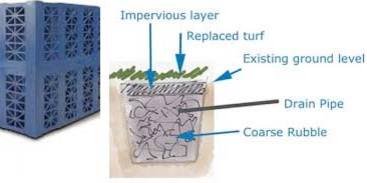
Soakaways
Soakaways are a type of ‘infiltration device' - a way of dispersing surface water in situations where it is impractical or impossible to make a connection to the public sewer system.
Many older soakaways are little more than a hole in the ground filled with old bricks, clinker or gravel, whilst modern soakaways are usually empty chambers constructed from prefabricated units. Although soakaways should not require much maintenance, their effectiveness can decrease if there is a build up of silt.
It is a good idea to lift the cover and check for silting or contamination every few months or so. Any build-up of silt at the base of the soakaway chamber can be removed manually during dry conditions when the soakaway is empty. Occasionally, older soakaways will cease to function because they have become entirely blocked with silt and mud. In this case, the only remedy is to excavate and rebuild the soakaway.
A far better system is employed nowadays using what are known as modular attenuation cells. The cells are lightweight plastic structures with a high void ratio. This allows them to be buried in the ground providing a storage area for water while it percolates into the surrounding soil. Because they are also fairly strong, they can be covered with a layer of soil and grassed over.
The required size of the soakaway will need to be worked out in advance. The following formula is generally used to calculate the volume of the soakaway and should be suitable for most situations.
C= (AxR)/3
Where C is the capacity or volume of the soakaway in m3
A is the area of roof of the building in m2
R is the rainfall expressed in m/h (metres / hour)
For the rainfall a standard 50mm per hour is usually used which equates to 0.05m/h
Using this formula we can quickly calculate the size of the soakaway that needs to be installed. Say we have a roof area of 60 m2 and we us the standard rainfall of 0.05 m/h the calculation is as follows:
C=(60x0.05)/3
C=(3)/3
C=1 m3
We now know that we will need enough modular cells linked together to give us at least 1 cubic metre.

Driveway drainage
Inadequate driveway drainage can lead to a number of home damaging problems. If you've ever experienced a flooded garage, or water seeping into your home because of a poorly planned driveway you understand. If you haven't experienced this you'll want to keep it that way by making sure you have the proper driveway drainage solutions in place.
For some properties, especially those below street level, it's difficult to solve the drainage problem with correct placement and slope alone. In this situation driveway drains will need to be installed. A trench drain can be installed where the driveway meets the garage. This type of drain is long and narrow and should run the entire width of the driveway. A trench drain must be covered by a metal grate to keep it free of debris that could clog the pipe. If you live in a very rainy climate, consider installing multiple trench drains at different points along your driveway. Decorative grates are available for trench drains that can be used as a unique design element. Smaller site drains can also be used in specific areas of the driveway where water collects.
In urban areas rainfall (known as surface water) normally runs off driveways and into the public sewage system.
This can also transfer pollutants (oil, tyre residues and the like) into watercourses.
Normally the public sewage system can cope with the extra water, however because of its age, on occations it can not accomodate the excess water, as it is not designed to do this.
When heavy rainfall and storms occur the system can be overloaded and back up, with predictable,unpleasant, and potentially expensive consequences. We’ve all seen the effects of devastating floods in the UK in recent years.
Overloaded drainage systems cause twice as much flooding as overflowing rivers.
Historically, as a home owner you didn’t need planning permission to modify your front garden, by for example paving over it to provide hardstanding for a car.
The result of this is that two thirds of front gardens in some cities have been wholly or partly paved over. So rainfall is no longer soaked up by the front garden but runs onto the street and into the public drainage system.
As part of their overall strategy for dealing with excess surface water the government have changed the rules to limit this unrestricted flow.
What Can You Do?
New planning regulations introduced in October 2008 mean that homeowners in England no longer have an automatic permitted development right to do whatever they want with their front drive.
If you want to replace your drive, and you don’t want to go through the time and expense of obtaining planning permission, either the surface must be permeable (ie it will let the rain through to soak into the ground beneath) or you must install a method of trapping the surface water and letting it soak away elsewhere on your property.
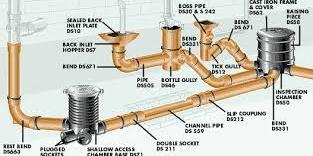
Foul and combined drains
Foul drains carry the waste (grey) water from sinks and toilets to the public sewer. If this waste water or effluent is mixed in with the surface water, it is called a combined system.
A yearly inspection of all accessible drains, manholes, inspection chambers and outlets is advisable. If you suspect a blockage you may be able to clear it using drain rods, otherwise seek professional drainage advice.
It is now possible to use CCTV technology to inspect drains and some repairs can be carried out without disturbing the ground above.
Inspection chambers and manholes should be cleaned and repaired as necessary.

Lawn drainage
Poor drainage in the garden can have many causes. If you have a high seasonal water table you will find that the water sits on or close to the surface during periods of high rainfall.
If your soil structure is heavy, this too can reduce soil permeability and cause poor drainage.
Low points in the garden, can allow water to collect and drain poorly.
Walking on your poorly drained lawn when it's wet can further add to the problem because the wet soil compacts and loses its structure.
Land drains are trenches consisting of single walled corrugated PVC-U pipe supplied perforatedand gravel; for the collection and removal of surface and sub surface water, they work by encouraging the water to enter the trench because the gravel provides less resistance than the surrounding soil. (Water will always travel to the area of least resistance if encouraged to do so). The trenches then carry the water away from the problem zone.

Ditch clearance
Ditches that run within the limits of the highway do not usually form part of the highway (since they do not assist the free passage of people or vehicles along the highway) and remain the responsibility of the adjacent landowner or occupier. However, where the ditches have been designated as forming part of the highway on land owned by the Highway Authority, or where the ditch was constructed for the sole purpose of draining the highway, then the ditch will form part of the highway and will be the responsibility of the Highway Authority.
Most open ditch drainage systems are historic and are the responsibility of the adjoining landowner for maintenance, but the Highway Authority has prescriptive powers to drain into them. The Highway Authority can cleanse and restore the profile of these ditches as appropriate and charge the landowner where necessary.As we experience increased levels of development and more intense and heavy rainfall events, the importance of maintaining and improving the capacity of the county’s land drainage system has never been greater, for the following reasons:
Reduced flooding:
Surface water drainage systems such as ditches and culverts aim to drain excess surface water away from the land, before water levels put property, roads, land, people and the environment at risk of flooding. If the system of ditches and culverts is maintained to a good standard, any flooding is only likely to affect the floodplain. Surface water drainage systems can provide storage in addition to allowing the flow of water, so maintenance is vital to ensure this storage capacity is maintained.
Reduced landowner liability:
If it can be demonstrated that a flood has occurred as a direct result of a landowner not satisfying their riparian responsibilities through proper maintenance of their ditches, that landowner could be found liable for compensating any damage that occurs. In this situation the landowner faces being taken to court by those that are affected.
Enhanced environment:
If ditches are sensitively maintained, they can create an excellent habitat for wildlife, including protected species such as the water vole.
A better community:
Keeping your ditches well maintained benefits the community as a whole. When an area experiences frequent flooding, this becomes a nuisance to the community, restricting access and causing a health and safety risk. The community will respect your efforts to reduce the frequency of flooding thereby enhancing everyday life within the community.
Determine a Maintenance Programme:
For all ditches for which you are responsible, it is good practice to develop a programme that sets out how often and at what time of the year you will carry out maintenance works.
Most ditches require annual maintenance to some degree. The best time of year to undertake major clearance works is in late September/October, in preparation for increased winter flows and once vegetation has already begun to naturally die back.
For open watercourses, your programme should state how much vegetation you plan to cut back to ensure a free flowing watercourse. It should also identify at what intervals you will remove silt from the bed of the watercourse to maintain the capacity of the ditch.
For culverted watercourses, your programme should state how often you would inspect the culvert for blockages or signs of collapse.
For structures along your watercourse, such as weed screens, grilles, or sluices, your programme should include a routine for inspection and clearance of structures, especially including times of high flow.
Mowing and Trimming Vegetation:
When trimming bank side vegetation it is important to consider any impact on biodiversity. Mowing of banks around ditches should be minimised during the animal spawning season of March to mid July.
When trimming the banks, it is recommended to cut only up to just above the water level on one side so leaving the fringe of the bank uncut, thereby maintaining some habitat as well as clear flow in the ditch. Any cuttings should be removed to prevent contamination of the watercourse or causing blockages downstream.
De-Silting:
When de-silting ditches, it is important to consider any impact on biodiversity. Temporarily depositing silt on top of the banks of the watercourse allows for organisms to migrate back into the ditch. It is however essential that this material does not then block the highway grips or that the material is carried on to the road.
Where possible, try to maintain the original profile and cross section of the ditch when de-silting. If the gradient is altered it can change the flow pattern and increase flood risk either upstream or downstream.
The information contained on this web page is provided as advice and guidance on general drainage issues and is not a statement of law.



